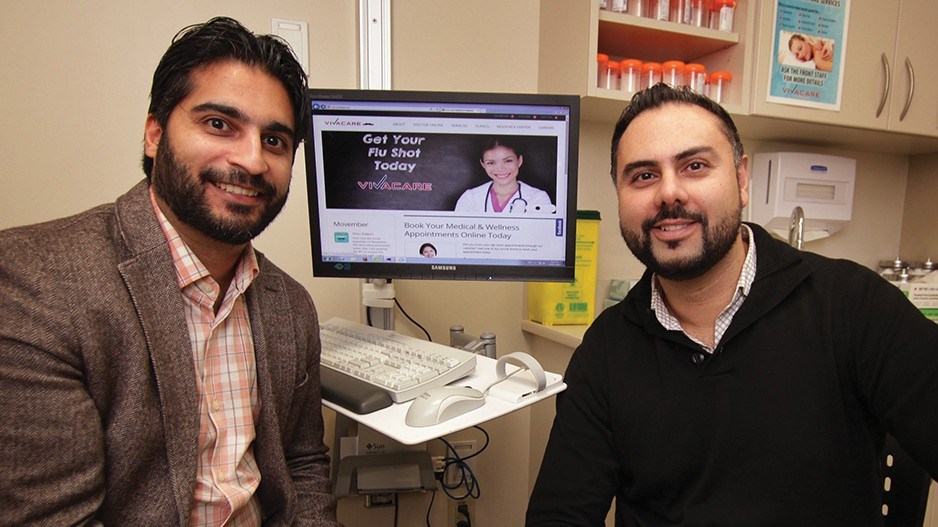Efforts to improve the delivery of health-care to patients is generating new delivery models from local technology companies.
For Surrey-based Viva Care Medical Group, it’s all about “embracing the frustration,” said Aleem Teja, the company’s director of operations.
“The biggest frustration for anybody who comes into a clinic is they walk up to the clinic, and it’s either closed early because the doctor has met their quota or they come in and they’re waiting two hours to see a physician,” Teja said.
Viva Care, a multidisciplinary health-care clinic that was started in 2008 and now has 10 locations across the Lower Mainland – including three in Surrey – started publishing wait times online for all of its clinics in 2013.
A 2014 health policy survey by the Commonwealth Fund that looked at physician and specialist wait times in 11 countries including Australia, France, the United Kingdom and the United States, ranked Canada last.
The study also found wait times to see a physician or specialist had not improved across the country since 2007.
Teja said Viva Care is following in the footsteps of a 2013 initiative by Vancouver Coastal Health that offers real-time projected wait times for hospitals including Vancouver General, Mount St. Joseph, St. Paul’s, Lions Gate and Richmond.
“Health authorities are doing this with their emergency room wait times,” added Teja, noting they update each clinic’s projected wait times every 20 minutes. “They’re publishing them online, so the idea with us was to have that transparency so the patient knows before they come, and also so they can plan out their day.”
Publishing expected wait times is one of the initiatives the clinic has implemented with the aim of improving convenience. Viva Care, which recently won a Surrey Board of Trade Business Excellence Award, has also incorporated a pager system for its clinics stationed inside Walmart stores.
Another initiative gives patients the option of video conferencing with a doctor instead of coming into the clinic. Teja said this has been especially useful for patients who are senior citizens.
“So you can imagine the ease and comfort that would create for a 60- or 70-year-old, not having to organize a ride to the clinic and alleviating that problem. … They can easily get their health question answered by their family doctor over a secure portal, and/or get their prescription refilled over the portal and have that prescription delivered to their pharmacy.”
A recent report from Canada’s Health Informatics Association found a 45.7% jump in the use of telehealth across the country since 2013. Last year the association reported that close to half a million telehealth sessions took place.
Teja said telehealth works best for Viva Care’s clinics when patients have already established a rapport with their physicians, making it easier for some appointments to take place online instead of during a walk-in visit.
“We want to make sure the physicians are comfortable, as well, treating the patient over telehealth,” he said.
In 2014 Health Minister Terry Lake ordered a review of overall telemedicine care, to address concerns the surge in use could create “virtual walk-in clinics” and an unsustainable rise in costs.
Ministry of Health media relations manager Laura Heinze said the review “highlighted the need for a broader telehealth strategy to provide a provincially co-ordinated vision. ... We have received valuable input that will assist us in developing policy recommendations to support the best use of telemedicine in B.C. The Ministry of Health is now incorporating that feedback as we create a telehealth strategy for the province, which will ensure patients receive safe, appropriate and effective care, no matter where they live.”
Telehealth is available in about 20 clinical program areas including oncology, mental health/psychiatry, thoracic surgery, home care, renal, rheumatology, wound care and special services for children.
More than 100 communities across the province have access to telehealth services from approximately 200 telehealth facilities, which provide about 470 video-conferencing end points.




